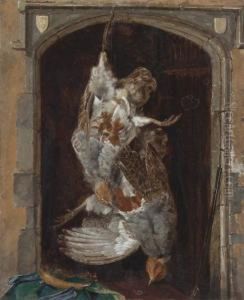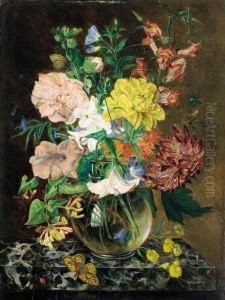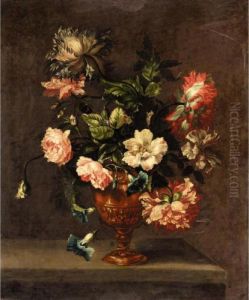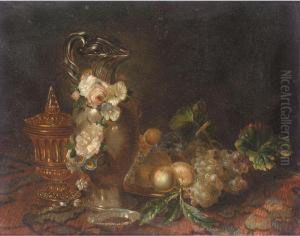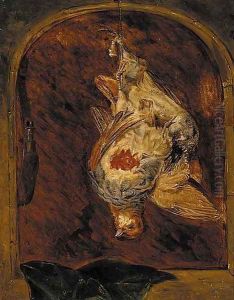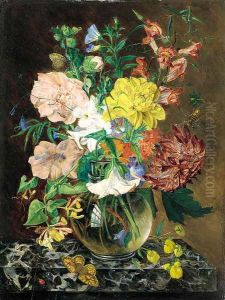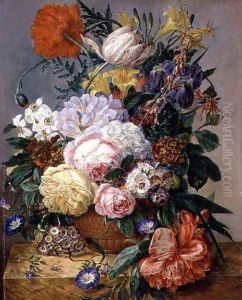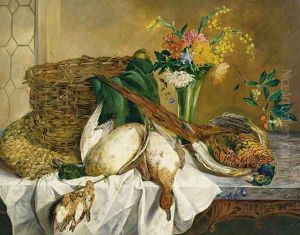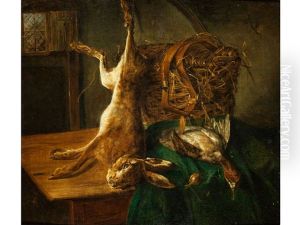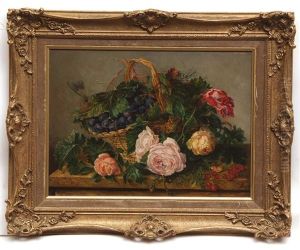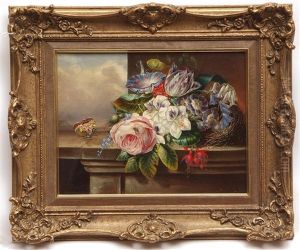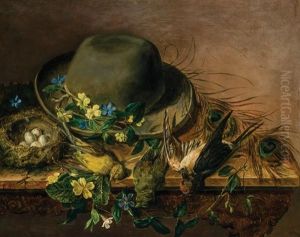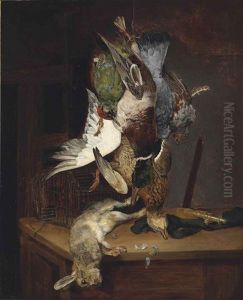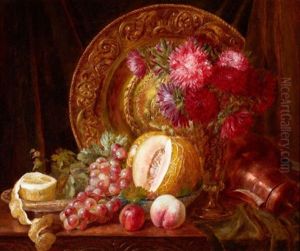Emily Stannard Paintings
Emily Stannard was an esteemed English painter known for her mastery in still life and occasionally landscape paintings. Born in Norwich, England, in 1803, she became a prominent figure in the Norwich School of painters, which was a unique movement in the 19th century that focused on the natural beauty of the English countryside and included both landscape and still-life subjects in its oeuvre.
Stannard's talent was recognized early on, and her career was significantly supported and influenced by her family, particularly by her uncle, Robert Ladbrooke, who was also a founder member of the Norwich Society of Artists. This familial connection not only provided her with initial training and encouragement but also deeply rooted her in the artistic environment of Norwich, which was thriving with creativity and innovation at the time.
Despite the challenges faced by women artists in the 19th century, Emily Stannard managed to carve out a successful career for herself. She exhibited her work frequently at the Norwich Society of Artists from 1820 onwards and gained considerable recognition and respect from her peers and the public alike. Her paintings were celebrated for their detailed and vibrant depiction of nature, showcasing her exceptional skill in capturing the subtleties of light and texture.
Stannard's work remains a significant part of the British art history narrative, not only for its artistic merit but also for the barriers she overcame as a woman in the art world of her time. Her legacy is preserved through her paintings, which continue to be admired for their beauty and craftsmanship, and through her contribution to the Norwich School's prominence in English art history.
Emily Stannard's death in 1885 marked the end of a prolific career, but her influence and the appreciation for her work have endured. Today, she is remembered as a pioneering female artist who contributed significantly to the development of still life painting in England and as an integral member of the Norwich School, whose collective work has left a lasting impact on the landscape of British art.

